
What Is Crop Steering Cannabis?
There are plenty of ways to cultivate cannabis, but for those looking to maximise results, consider crop steering. But what is it, and how does it stack up against other growing techniques, such as low and high-stress training? Take a look at everything you need to know about crop steering and how it can benefit your yields.
We all want to get the best out of our cannabis plants, and there are many ways to achieve this, one of which is crop steering. This process is used to bolster yields and the overall performance of your plants. But how does it work, and can it be easily achieved by home growers? In this article, we delve into everything you need to know about marijuana crop steering.
How does crop steering cannabis work?
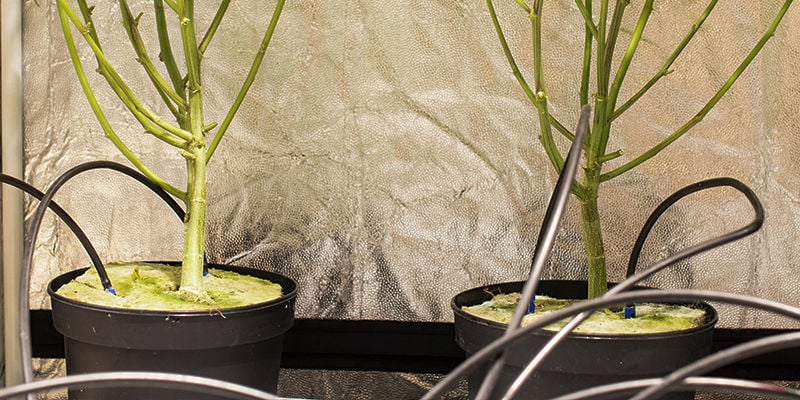
So, what is the idea behind steering cannabis? Essentially it's a method of adjusting the environmental conditions involved in cannabis cultivation to elicit a certain response in plants. This includes tweaking factors such as temperature, humidity, light, irrigation, feeding, CO₂, and more. In response to certain conditions and forms of stress, plants release hormones that boost performance during both the vegetative and generative stages.
Vegetative growth vs generative growth
What do we mean when we say the "vegetative" and "generative" stages? Vegetative growth is the phase between the seedling phase and eventual flowering phase of the plant. It is during this phase that plants produce a strong stem, branches, and lots of fan leaves. The generative growth stage, on the other hand, is when the plant puts its energy into producing buds. Autoflowering cannabis cultivars automatically move from the veg phase into the generative phase without any influence needed. In contrast, photoperiod strains require a change in the light cycle to start flowering.
What are the differences between crop steering and plant training?
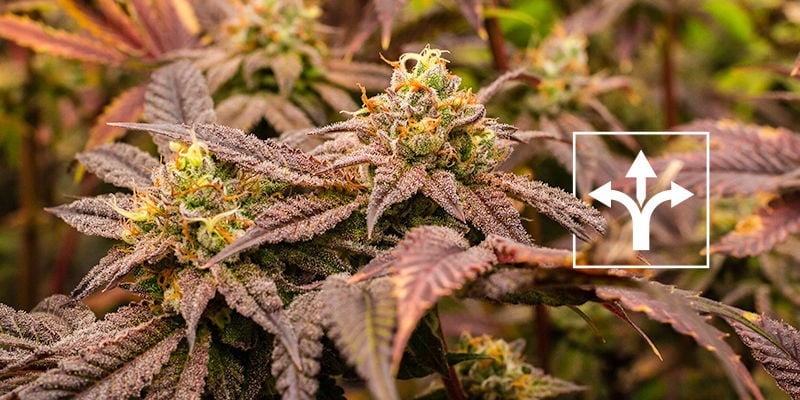
Of course, influencing a plant's environment and using various methods to maximise performance is nothing new, as growers have long utilised low and high-stress training techniques. However, there are notable differences between crop steering and plant training that set the two apart.
Technique
There are arguably many more facets involved in steering compared to training, but both have a valued place in the cannabis growing arena. Training cannabis often leans heavily on damaging or removing parts of the plant, or bending branches as a means of causing physical stress that results in increased growth. However, steering is a little more easygoing and less physically damaging.
As mentioned, steering is achieved by tweaking the climate (e.g. humidity, lighting, and temperature) and/or by influencing factors related to irrigation and nutrients, such as the water content of the substrate, how dry it is, and its electrical conductivity.
Timing
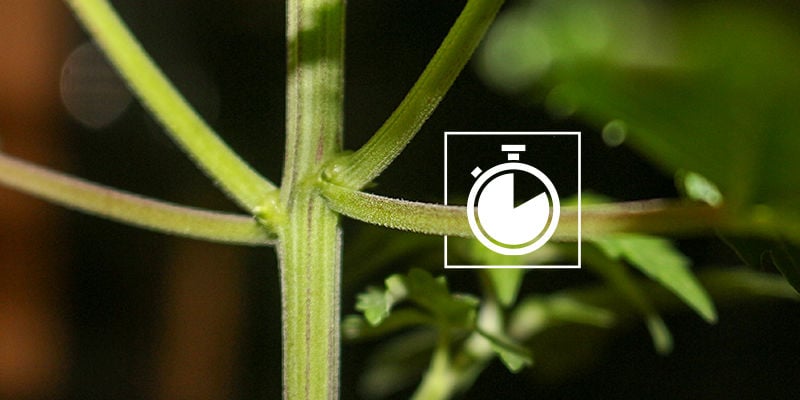
Like a lot of things in life, timing is massively important when it comes to both steering and training. Given the excess stress and sometimes physical damage caused by bending, cutting, and breaking branches, some growers make the mistake of training their plants too early, before they can really handle it. This can result in irrevocable damage. Of course, there are many different methods of training, but in any case, waiting until the plant is truly in its vegetative stage, with around 5–6 nodes, is critical before using low or high-stress training techniques.
Steering cannabis is slightly different, as it can be utilised during both the vegetative and generative stages. By altering factors related to climate and irrigation, there’s little chance of causing extreme damage to your plants—if you go about it right. That said, similar to training, the rule of thumb is to wait until 5–6 nodes appear on the plant before utilising any steering methods.
Results
Results are, of course, the driving factor behind using techniques such as steering and training. We want our plants to perform well throughout their life cycle and deliver a large haul of healthy, flavourful, and plump buds. Otherwise, what's the point?
Though the plant’s genetics play a big role in final yield, both steering and training have the potential to push production to the max, albeit through different means. With training, the breaking, cutting, and manipulating of branches typically causes more main colas to be produced, or helps to maximise light energy to all of the bud sites. With steering, by fine-tuning all of the elements during the vegetative stage and generative stages, plants are able to flourish, churning out sizeable yields.
How to crop steer cannabis
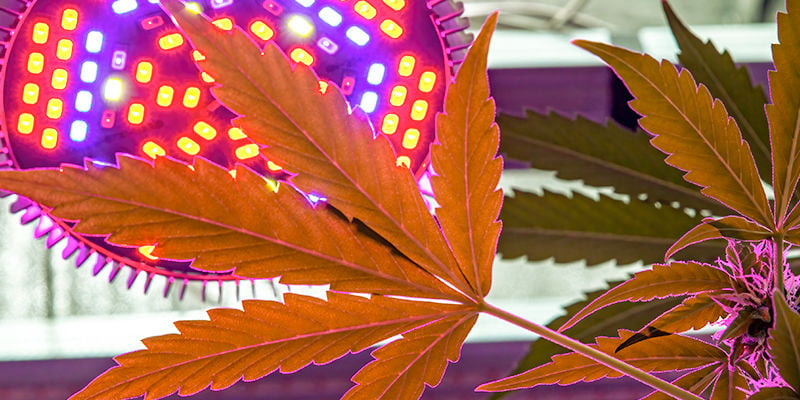
So, how do you go about actually steering cannabis? Do you need acres of land or an industrial-sized grow-op? Thankfully, no.
Ultimately, the steering process begins from the very moment you choose your strain. Indeed, your choice of genetics plays a massive role in how your plants will handle steering. Picking a cultivar that's known for being robust and receptive will surely be the way to go. Other factors, such as the eventual terpene profile and THC content, are a matter of preference, so simply find a strain that suits you.
As discussed, the process of steering can be divided into two different stages: vegetative and generative. Let's take a look at what each one entails.
The vegetative stage
The vegetative stage of the cannabis grow cycle basically lays down the foundations for the eventual performance of the plant. Growing plenty of leaves, branches, and a strong stem optimises photosynthesis and equates to more buds down the line.
Lighting
Lighting plays a significant role in cannabis crop steering. During the vegetative stage, the idea is to offer a lower intensity of light, mimicking spring conditions. Vegging plants prefer blue light, and will respond by exhibiting robust growth. This can be achieved by opting for metal halide lights, which are suited for the veg stage, or full-spectrum LEDs with a veg setting. You can regulate the overall light intensity by using a sensor that will alert you of any issues.
Temperature and humidity
These are two factors that need to be accurately controlled during the vegetative stage, regardless of whether or not you're steering. The ideal temperature for steering cannabis plants is typically around 25–31°C, with humidity between 65–80%. This will provide the perfect environment for plants to flourish during the vegetative phase. However, this isn't all to chance; the humidity and temperature can be optimised by monitoring vapour pressure deficit, otherwise known as VPD. As the VPD increases, the plant will need to take in more water from its roots. Ideally, the VPD should be about 0.8–1.1kPa. A humidity controller can regulate this.
Nutrients and watering
In order for vegging plants to grow plenty of leaves and bud sites, they need to have sufficient nutrients. Of course, this has to be highly regulated, as too much can result in detrimental effects. The use of an EC meter can help to optimise nutrients for the stage, ensuring robust plant health. Electrical conductivity (EC) is a system of measuring how water can transport an electric charge, which is relative to the amount of fertiliser in nutrients. During the vegetative stage, the EC level should be around 2–4dS/m.
Similarly, water intake also has to be carefully controlled. You should aim to water about 1–3% of the substrate volume with each watering. Allow the substrate to dry out by around 10–15% before watering again. Overall, the substrate’s water content should be at around 55–70%. This can easily be measured through the use of a moisture meter.
The flowering stage

After optimising the environmental conditions of the vegetative stage, the steering process is far from over. Otherwise known as the generative stage, flowering is a make-or-break moment for your final harvest. In this stage, you turn up the stress in hopes of promoting the growth of a bevy of high-quality buds. Let's take a look at what it entails.
Lighting
While lower light intensity and blue light are desired during veg, flowering plants desire greater intensity and a red spectrum of light. This mimics hot, summer-like conditions, signalling to the plant to generate buds. During this stage, HPS lights or LEDs with a flowering setting are ideal. Again, light intensity can be carefully monitored through the use of a dedicated sensor. Of course, it's entirely possible to burn your plants under hot lights, so take caution and don't undo your hard work!
Temperature and humidity
As discussed, the idea of steering during the flowering stage is to cause some stress. In terms of temperature, this can be achieved by lowering it to around 15–25°C. It might not sound like a massive leap from the veg phase, but this will cause the plant to begin to respond differently and start to produce buds.
Humidity will also need to be altered at this stage, sitting at 40–70% with a VPD of 1.0–1.5kPa. During the first few weeks of flowering, levels can be on the higher end of the range; about 60–70%. Once the buds start to increase in density, though, reduce humidity to 40–50%.
Nutrients and watering
During the flowering phase, you should aim to water less frequently but drench more of the substrate with each application. Water with 4–8% of the substrate’s volume. The overall water content of the soil should be between 25–70%. In other words, you can let it dry out a little more in between watering. In terms of nutrients, aim for an EC level of around 5–12dS/m.
Monitor and adjust
Crop steering is not an exact science, and each grower's experience will differ. It requires a keen eye and plenty of patience. Being able to monitor and make adjustments on the fly is paramount for peak performance. As discussed throughout the article, there are plenty of tools that can help you get a read on how your plants are doing. Whether in the vegetative or flowering stage, keep an eye out.
How do you know if crop steering is working?
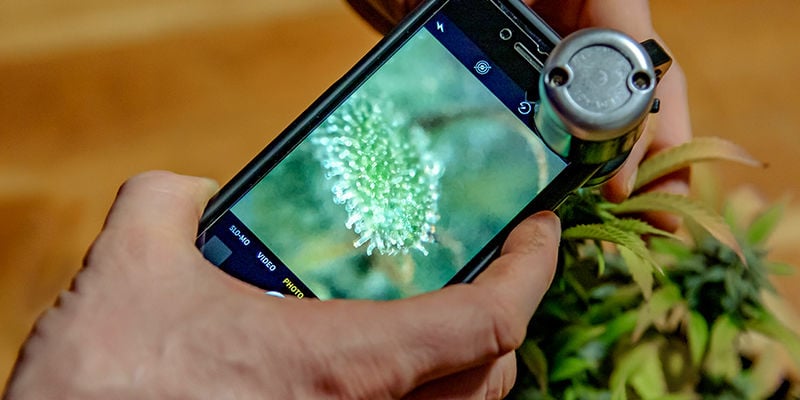
How do you know if you're on the right track with your cannabis crop steering? It's all down to keeping track of the progress of your plants. But what should you be taking note of? Here are some characteristics that will surely clue you into the progress of your crop steering:
- Height of the plant
- Diameter of the stem
- Development of roots
- Internodal spacing
- Stem and leaf colour
- Trichomes
- Size of the flowers produced on the plant
These characteristics will be the most significant indication of whether steering is working. Now, we're not implying that you have to stare at your plant endlessly; just be sure to check in often, recording any changes in the above metrics. As you become more and more comfortable with cannabis crop steering, the results will speak for themselves.
How long can you keep crop steering cannabis?
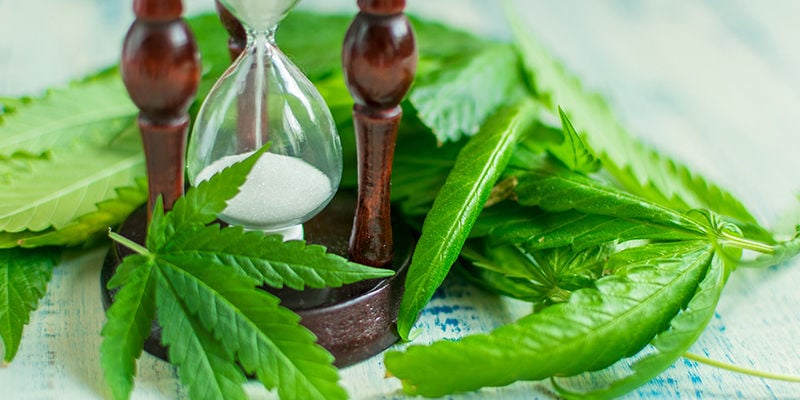
With the vegetative stage of cannabis usually lasting between 4–8 weeks (occasionally longer) and the flowering stage lasting 6–12 weeks, there's no exact time frame for crop steering. It really is a case of monitoring and adjusting until the plants are ready to yield. Typically, it takes between 4–8 months to fully cultivate a cannabis plant, so be prepared for an extended growing period if need be.
Crop steering: An advanced technique for maximising plant potential
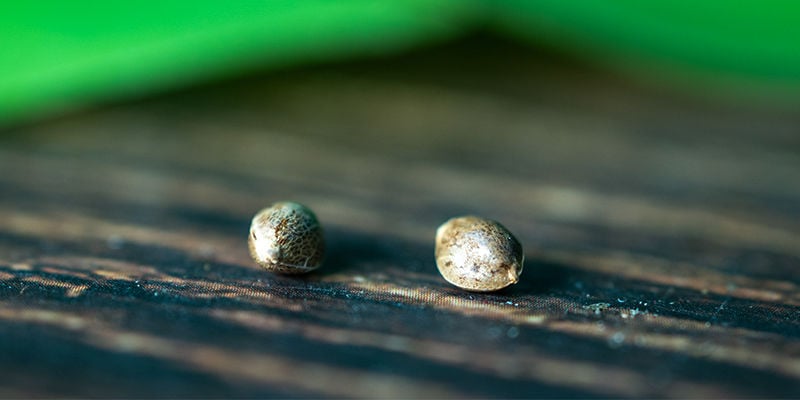
As you can probably tell by this point, there's no one-size-fits-all approach to cannabis crop steering. It takes a lot of time, patience, and fine-tuning. While it might not be entirely appropriate for newcomers, it's certainly a practice that every cannabis-growing aficionado can aspire to. However, we all have to start somewhere, so don't be put off by a potentially tricky task. As they say, “fortune favours the brave”, so why deprive yourself of the staggering yields of aromatic and potent buds that you wouldn't necessarily achieve through more “conventional” means of cannabis cultivation?
But where do you start? That part is simple. Head over to the Zamnesia store and get your pick of some of the most robust cultivars that are more than suitable for steering. We also stock a wide range of accessories and products that are ideal for the task!
-
 4 min
4 September 2023
8 Harvesting Tools Every Cannabis Grower Needs
Learn about the top 8 cannabis harvesting tools and what makes them a valuable addition to the grower’s arsenal.
4 min
4 September 2023
8 Harvesting Tools Every Cannabis Grower Needs
Learn about the top 8 cannabis harvesting tools and what makes them a valuable addition to the grower’s arsenal.
-
![Top 10 Purple Cannabis Strains [2025]](https://www.zamnesia.com/modules/prestablog/themes/responsive/up-img/slide_2549.jpg?230f6a284363d0ca053acc3248aa3b5d) 5 min
6 April 2023
Top 10 Purple Cannabis Strains [2025]
As cannabis growers, we're simply spoilt for choice when it comes to picking strains. However, one type has consistently been on the radar of many a connoisseur; purple strains. These colourful...
5 min
6 April 2023
Top 10 Purple Cannabis Strains [2025]
As cannabis growers, we're simply spoilt for choice when it comes to picking strains. However, one type has consistently been on the radar of many a connoisseur; purple strains. These colourful...
-
 6 min
16 March 2021
Regular And Feminized Cannabis Seeds: What’s The Difference?
For a long time, outside of strain distinctions, cannabis seeds were genetically the same across the board. Relatively recently, though, feminized seeds have become increasingly popular with...
6 min
16 March 2021
Regular And Feminized Cannabis Seeds: What’s The Difference?
For a long time, outside of strain distinctions, cannabis seeds were genetically the same across the board. Relatively recently, though, feminized seeds have become increasingly popular with...
-
 7 min
1 February 2021
Perpetual Harvesting: How To Crop Cannabis All Year Long
If you're like most cannabis growers, you may think you're limited to just one harvest per year. However, with the right space, tools, and techniques on your side, you can enjoy new buds every few...
7 min
1 February 2021
Perpetual Harvesting: How To Crop Cannabis All Year Long
If you're like most cannabis growers, you may think you're limited to just one harvest per year. However, with the right space, tools, and techniques on your side, you can enjoy new buds every few...





 United States
United States











